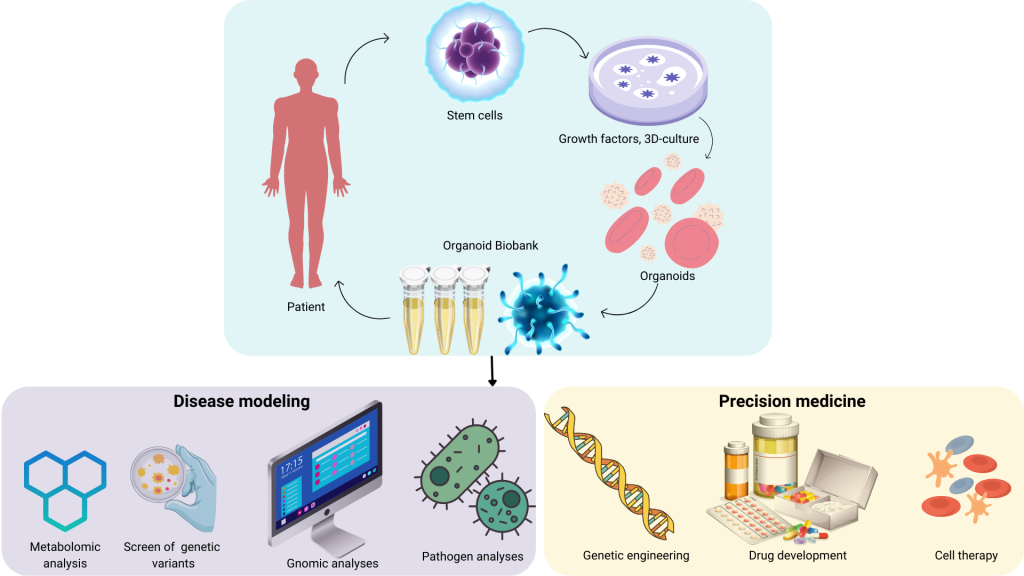What are Organoids?
Organoids are three-dimensional cell cultures that mimic the complex structures and functions of human organs. They are generated from stem cells that can differentiate into different cell types found in the organ of interest. Organoids can be used to model human diseases and test drugs for their effectiveness and toxicity.
Preparing Organoids
To prepare organoids, stem cells are isolated from human tissue or generated from induced pluripotent stem cells (iPSCs) derived from adult cells. The stem cells are then cultured in a specialized 3D matrix that mimics the organ’s extracellular environment, promoting the formation of a structure that resembles the organ’s architecture. As the cells grow, they self-organize into distinct cell types and structures, including organ-specific tissues and functional units.
Disease Modeling with Organoids
Organoids are valuable tools for disease modeling as they closely resemble the complexity and heterogeneity of human organs. Researchers can use organoids to study disease mechanisms, test drug responses, and identify new therapeutic targets. Organoids have been used to model a wide range of diseases, including cystic fibrosis, Alzheimer’s disease, and cancer.
Metabolomic Analyses with Organoids
Metabolomics is the study of small molecules that are involved in cellular metabolism. Metabolites can provide insights into disease mechanisms and drug responses. Organoids are an excellent platform for metabolomic analyses as they allow for the collection of organ-specific metabolites that are representative of the in vivo environment. Metabolomic analyses can reveal differences in metabolite profiles between healthy and diseased organoids, providing insights into disease mechanisms and potential therapeutic targets.
Screening Genetic Variants with Organoids
Organoids can also be used to screen for genetic variants that contribute to disease susceptibility or drug responses. Researchers can use CRISPR-Cas9 gene editing to introduce specific genetic variants into organoids, allowing them to study the effects of these variants on disease mechanisms and drug responses.
Genomic Analyses with Organoids
Genomic analyses can provide insights into disease mechanisms and drug responses by identifying genetic mutations and expression changes that are associated with disease. Organoids can be used for genomic analyses, allowing researchers to study gene expression, DNA methylation, and other epigenetic modifications in a 3D environment that more closely resembles the in vivo setting.
Precision Medicine with Organoids
Organoids have enormous potential for precision medicine, including drug development, cell therapy, and genetic engineering. Organoids can be used to identify drugs that are effective for specific patient populations or to develop personalized cell therapies that target specific genetic mutations. Organoids can also be used for genetic engineering to create patient-specific models that enable the development of customized treatments.
Conclusion
Organoids are an exciting and rapidly developing technology that holds great promise for disease modeling, metabolomic analyses, genetic variant screening, genomic analyses, and precision medicine. Organoids provide a valuable platform for studying disease mechanisms, identifying new therapeutic targets, and developing personalized treatments. As organoid technology continues to evolve, it is likely that their applications will continue to expand and revolutionize the field of medicine.
